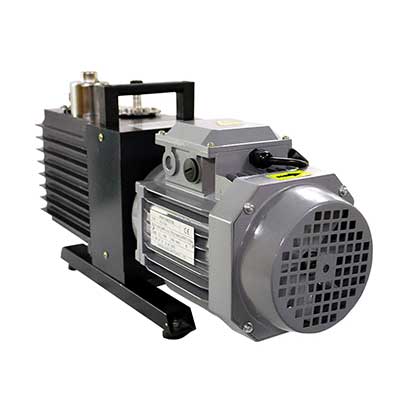News
Working principle of rotary vane vacuum pump
Rotary vane vacuum pump (rotary vane pump for short) is an oil-sealed mechanical vacuum pump. Its working pressure range is 101325 ~ 1.33 × 10-2 (Pa) belongs to low vacuum pump. It can be used alone or as a foreline pump for other high vacuum or ultra high vacuum pumps. It has been widely used in production and scientific research departments of metallurgy, machinery, military industry, electronics, chemical industry, light industry, petroleum and medicine.
Rotary vane pump can remove dry gas in sealed containers. If a gas ballast device is attached, it can also remove a certain amount of condensable gas. However, it is not suitable for pumping out gases containing too high oxygen, corrosive to metals, chemical reactions to pump oil, and particulate dust.

2XZ - 2 rotary vane vacuum pump
Rotary vane pump is one of the most basic vacuum obtaining equipment in vacuum technology. Rotary vane pumps are mostly small and medium-sized pumps. Rotary vane pumps are available in single and double stages. The so-called double stage is the structure that connects two single-stage pumps in series. It is usually made into two stages to obtain higher vacuum. The relationship between the pumping speed of the rotary vane pump and the inlet pressure is specified as follows: At the inlet pressures of 1333Pa, 1.33Pa, and 1.33 × 10-1 (Pa), their pumping speed values must not be lower than 95% of the 50% and 20%.
Rotary vane pump is mainly composed of pump body, rotor, rotary vane, end cover, spring and so on. A rotor is eccentrically installed in the cavity of the rotary vane pump, and the outer circle of the rotor is tangent to the inner surface of the pump cavity (there is a small gap between the two). During rotation, the top of the rotary blade is kept in contact with the inner wall of the pump cavity by centrifugal force and the tension of the spring, and the rotor is rotated to drive the rotary blade to slide along the inner wall of the pump cavity.
When the compressed gas exceeds the exhaust pressure, the exhaust valve is pushed open by the compressed gas, and the gas is discharged to the atmosphere through the oil layer in the oil tank. The continuous operation of the pump achieves the purpose of continuous pumping. If the exhaust gas is transferred to another stage (low vacuum stage) through the air passage, it is pumped away by the low vacuum stage, and then compressed into the atmosphere after being compressed by the low vacuum stage to form a two-stage pump. At this time, the total compression ratio is borne by two stages, thereby increasing the ultimate vacuum.
Send Us Message
Your message was sent successfully.
Sorry!Something Went Wrong.
